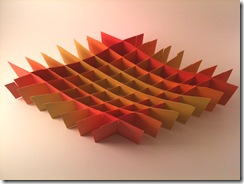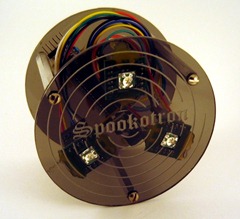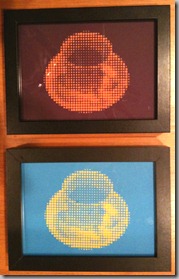 Back in July I built RoboSketch which to this day still gets more traffic than any other post on my blog. People seem to love it. Somehow the spammers have figured this out because it gets dozens of comments daily hawking Acai Berry diets, Colon Cleansing products and my favorite which is a site that sells the book “How To Get Pregnant.” But the dirty little secret is that aside from the demo video, I was never able to get the RoboSketch to draw anything without failing in one way or another.
Back in July I built RoboSketch which to this day still gets more traffic than any other post on my blog. People seem to love it. Somehow the spammers have figured this out because it gets dozens of comments daily hawking Acai Berry diets, Colon Cleansing products and my favorite which is a site that sells the book “How To Get Pregnant.” But the dirty little secret is that aside from the demo video, I was never able to get the RoboSketch to draw anything without failing in one way or another.
We’re not sending anyone to the moon here, so failure is always an option. In fact, failure isn’t feared, it’s desired. The best way to learn is hands-on, doing things and making mistakes. When you make a mistake yourself, that knowledge is ingrained in you in a concrete tangible way and you’re better off for it. So when my Etch A Sketch device was having conniptions, I took note of the failure and followed the advice of that most wise sage Tim Gunn. Make it work, people.
More…
d1ac8b52-a43b-45a6-adbf-3655c69f6738|0|.0

Merry Christmas!
Sparkle Labs published a paper Christmas tree kit (http://kits.sparklelabs.com/2009/12/15/light-up-christmas-tree-project/) that I did on my Craft Robo paper cutter. I lit them up with a pair of ShiftBrite addressable RGB LEDs controlled by an Arduino microcontroller. It’s basically a slightly modified version of the Spookotron Halloween pumpkin lights.
More…
ea1a04ce-87cb-4ab5-a844-e72eb3236c1f|1|5.0

This is the result of my first experiment making a sliceform object from interlocking pieces of cut cardstock. I got the idea and the name “sliceform” from a variety of folks on the web who are experimenting with this. Just as I was posting this I discovered these pictures on flickr from someone with the exact same colors of cardstock.
More…
60230498-9f16-4fad-adce-9039fe654f79|0|.0
 I tried out two new ideas for Halloween this year. One of them was an ill-conceived plan to carve a pumpkin using a Dremel tool. The pumpkin looked OK, but by the end I was covered in microscopic pumpkin shrapnel from head to toe. The other idea was to make an LED pumpkin light, and it turned out great.
I tried out two new ideas for Halloween this year. One of them was an ill-conceived plan to carve a pumpkin using a Dremel tool. The pumpkin looked OK, but by the end I was covered in microscopic pumpkin shrapnel from head to toe. The other idea was to make an LED pumpkin light, and it turned out great.
I call it the Spookotron and it uses 3 ShiftBrite RGB LEDs to light up the inside of a pumpkin. The LEDs are controlled by an Atmel ATMega 8-bit microcontroller. I chose the Arduino-compatible RBBB from Modern Device because it’s tiny and easy to program.
More…
5f8319ab-2bda-4b52-afe1-a2535283cdcc|0|.0
 Who the hell came up with Pin The Tail on the Donkey? And furthermore, why on earth are people still playing this asinine game? The wisdom of taking a bunch of kids, spinning them around until they’re dizzy, then sending them careening around the room blindfolded with the instructions “stick this thumbtack into something” is questionable at best. It’s one of those games like the 3-legged race where the amusement is not so much for the participant as it is the spectators who hope to laugh at some minor tragedy. Both games are based on the premise of performing under constraints – not being able to see, not being able to move freely, etc.
Who the hell came up with Pin The Tail on the Donkey? And furthermore, why on earth are people still playing this asinine game? The wisdom of taking a bunch of kids, spinning them around until they’re dizzy, then sending them careening around the room blindfolded with the instructions “stick this thumbtack into something” is questionable at best. It’s one of those games like the 3-legged race where the amusement is not so much for the participant as it is the spectators who hope to laugh at some minor tragedy. Both games are based on the premise of performing under constraints – not being able to see, not being able to move freely, etc.
Constraints show up in creative projects often. The choice of medium for an art project will impose constraints, and those constraints force you to think creatively about how to deal with them. Success can come from turning the constraints into an advantage, like the staples sculptures here. Or it can be less about the actual results and more about the Sisyphus-like effort involved in the creation.
More…
32f32540-cb5d-45fe-8b80-68db64377499|1|5.0